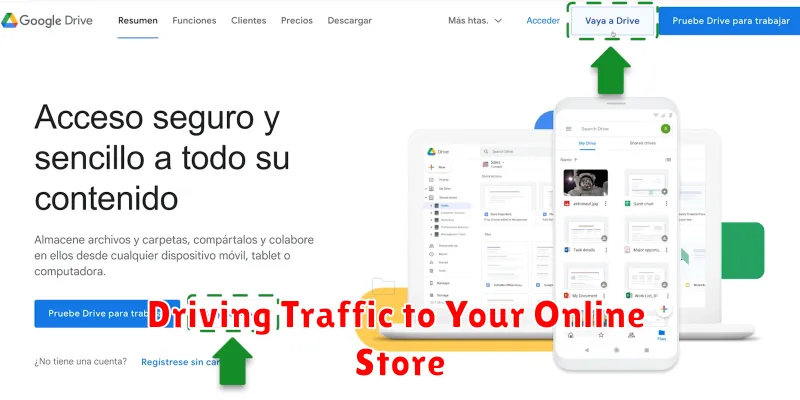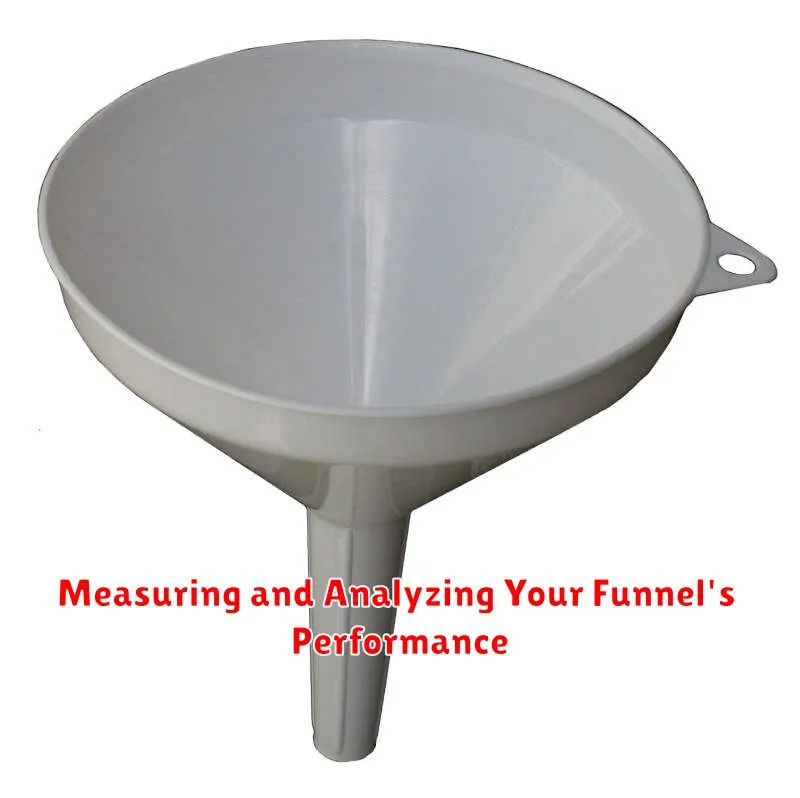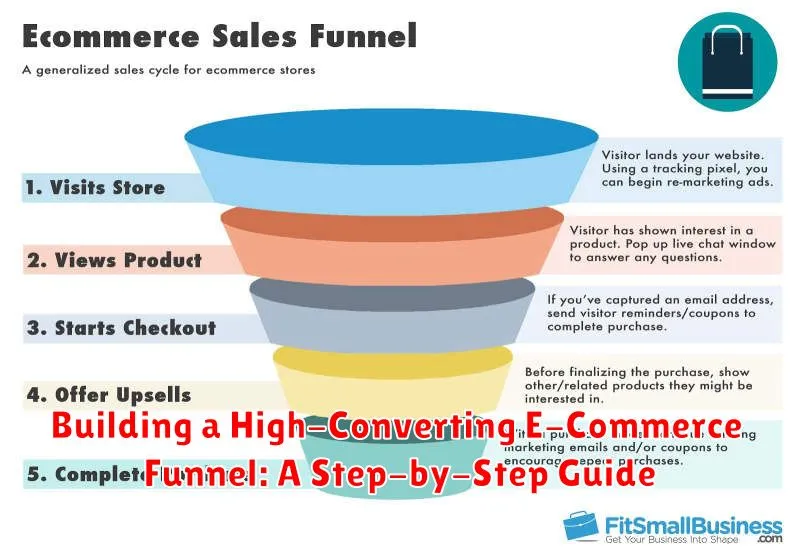Are you ready to transform your e-commerce business and see a significant increase in sales? This step-by-step guide will equip you with the knowledge and tools to build a high-converting e-commerce funnel. We’ll explore each stage of the funnel, from attracting potential customers to securing the final sale and fostering customer loyalty. Learn how to optimize each step for maximum conversion, turning casual browsers into loyal, paying customers. Whether you’re starting from scratch or looking to refine your existing e-commerce strategy, this guide is essential for achieving sustainable growth and maximizing your online sales potential.
Building a successful e-commerce funnel requires a strategic approach that focuses on understanding your target audience and their needs. This comprehensive guide will delve into the key elements of a high-converting e-commerce funnel, including awareness, interest, desire, action, and loyalty. You will discover practical tips and techniques for optimizing each stage, from crafting compelling content that grabs attention to designing persuasive product pages that drive conversions. By implementing the strategies outlined in this guide, you can effectively guide potential customers through the sales process, ultimately boosting your e-commerce sales and achieving your business goals.
Understanding the E-Commerce Sales Funnel
The e-commerce sales funnel is a visual representation of the customer journey, from initial awareness to final purchase. It’s a crucial framework for understanding how potential customers interact with your online store and identifying areas for improvement.
Think of it as a funnel, wide at the top where many potential customers enter, narrowing down as they progress through the stages. At each stage, some customers will drop off, while others will continue to the next. The goal is to minimize these drop-offs and guide as many people as possible through the entire funnel to a successful purchase.
By understanding the e-commerce sales funnel, you can optimize each stage to improve conversion rates and maximize revenue. This involves identifying pain points, streamlining the process, and delivering targeted messaging to nurture leads and encourage conversions.
A typical e-commerce funnel includes stages such as awareness, interest, desire, and action. By analyzing each stage, you can identify strengths and weaknesses in your current strategy and develop targeted interventions to enhance the customer experience and drive sales.
Key Stages of a Successful E-Commerce Funnel
A successful e-commerce funnel strategically guides potential customers toward a purchase. It’s typically divided into key stages, each designed to nurture the lead and move them closer to conversion. Understanding these stages is crucial for optimizing your sales process.
The primary stages include:
- Awareness: The customer becomes aware of your brand or product, often through marketing efforts or word-of-mouth.
- Interest: The customer expresses interest, perhaps by visiting your website, reading reviews, or engaging with your social media content.
- Desire: The customer develops a desire for your product, recognizing its value and benefits.
- Action: The customer takes the desired action, such as adding the product to their cart and completing the purchase.
Optimizing each stage ensures a smoother customer journey and ultimately, increased conversions.
Analyzing Your Target Audience
Understanding your target audience is crucial for a high-converting e-commerce funnel. Analyzing their behavior, preferences, and needs allows you to tailor your marketing efforts and product offerings for maximum impact.
Start by identifying key demographics like age, gender, location, income level, and education. Consider their psychographics, including values, interests, lifestyle, and attitudes. What motivates them to purchase online?
Research their online behavior. Which platforms do they frequent? What kind of content do they engage with? Understanding their digital footprint helps you reach them effectively.
Utilize analytics tools to gather data on website traffic, customer behavior, and conversion rates. This data provides valuable insights into what works and what needs improvement within your funnel.
Crafting a Compelling Brand Story
A compelling brand story is the backbone of a successful e-commerce business. It differentiates you from competitors and fosters a strong connection with your target audience. It’s more than just what you sell; it’s why you sell it.
Define your brand’s purpose. What problem are you solving for your customers? What values drive your business? Clearly articulating your purpose creates an emotional resonance with consumers.
Develop your brand’s personality. Give your brand human-like qualities. Are you playful and energetic, or sophisticated and elegant? This personality should inform your brand’s voice and visual identity.
Weave a narrative. Share your origin story. Highlight the challenges you’ve overcome and the milestones you’ve achieved. This creates authenticity and builds trust.
Communicate your story consistently. Ensure your brand story is reflected in all your marketing materials, from your website copy to your social media posts. Consistency reinforces your message and builds brand recognition.
Driving Traffic to Your Online Store

Driving targeted traffic is crucial for e-commerce success. A multi-faceted approach that combines several strategies is often most effective.
Search Engine Optimization (SEO)
SEO is foundational for organic visibility. Optimize your product pages and website content with relevant keywords to rank higher in search engine results pages (SERPs). This includes on-page optimization (like keyword usage and meta descriptions) and off-page optimization (such as building backlinks).
Paid Advertising
Consider paid advertising campaigns on platforms like Google Ads and social media. These targeted campaigns can quickly drive traffic to your store, particularly for new product launches or special promotions.
Social Media Marketing
Engage with your target audience on relevant social media platforms. Build a community and share valuable content to generate interest and drive traffic organically. Social media advertising can also amplify your reach.
Email Marketing
Build an email list and leverage it to promote new products, special offers, and valuable content. A well-segmented email list allows for personalized campaigns that resonate with your audience and drive conversions.
Optimizing Your Product Pages for Conversions
Your product pages are the heart of your sales funnel. Optimizing them is crucial for turning browsers into buyers. High-quality product photography is essential. Showcase your product from multiple angles and consider lifestyle shots to help customers visualize its use.
Compelling product descriptions are equally important. Focus on benefits, not just features. Clearly explain how the product solves a problem or improves the customer’s life. Use persuasive language, but avoid jargon or overly technical terms.
Customer reviews and testimonials build trust and social proof. Display them prominently on your product pages. Address any negative reviews professionally and proactively to demonstrate your commitment to customer satisfaction. A clear and concise call to action is also essential. Tell customers exactly what you want them to do, whether it’s “Add to Cart” or “Buy Now.”
Finally, ensure your product pages are mobile-friendly. A seamless mobile experience is critical for capturing sales in today’s e-commerce landscape.
Strategies for Abandoned Cart Recovery
Abandoned carts represent lost revenue opportunities. Implementing effective recovery strategies is crucial for maximizing sales. Retargeting is a powerful tool. Sending timely email reminders can recapture a significant portion of these lost sales.
Incentivize customers to complete their purchase. Offer a small discount or free shipping as an encouragement. Clearly communicate the offer in your recovery emails.
Simplify the checkout process. A complicated or lengthy checkout experience can contribute to cart abandonment. Streamlining the process can improve conversion rates. Offer guest checkout options and minimize required form fields.
Build trust and security. Display security badges and trust signals throughout the checkout process. This reassures customers that their information is safe and encourages them to complete the purchase.
Nurturing Customer Relationships through Email Marketing
Email marketing remains a powerful tool for nurturing customer relationships and driving repeat business. A well-structured email sequence can guide customers through their journey, from initial engagement to post-purchase follow-up.
Welcome emails are crucial for setting the tone and introducing your brand’s values. They offer a chance to personalize the customer experience and encourage further exploration of your products or services.
Transactional emails, such as order confirmations and shipping updates, provide essential information and build trust. They also present opportunities for upselling or cross-selling related products.
Promotional emails, showcasing new arrivals or special offers, keep your brand top-of-mind and incentivize repeat purchases. Segmenting your audience allows for targeted messaging, ensuring customers receive relevant promotions.
Finally, post-purchase follow-up emails solicit feedback, address concerns, and build loyalty. They can also include incentives for leaving reviews or referrals, further strengthening the customer relationship.
Measuring and Analyzing Your Funnel’s Performance

Measuring and analyzing your e-commerce funnel’s performance is crucial for continuous improvement and maximizing conversions. This involves tracking key metrics at each stage of the funnel to identify bottlenecks and opportunities for optimization.
Start by defining your key performance indicators (KPIs). Common KPIs include conversion rate, average order value (AOV), customer lifetime value (CLTV), and cart abandonment rate. Track these metrics using analytics tools and dashboards.
Analyze the data to understand where customers are dropping off in the funnel. For example, a high cart abandonment rate might indicate issues with shipping costs or payment options. A low conversion rate on product pages could suggest problems with product descriptions or imagery.
Regularly review your funnel’s performance and make data-driven adjustments. This iterative process will help you optimize your funnel for maximum effectiveness and profitability.

